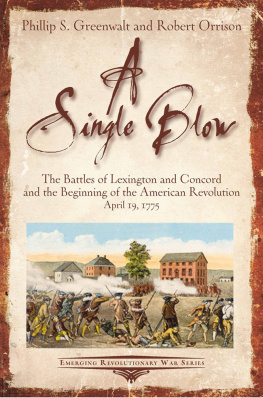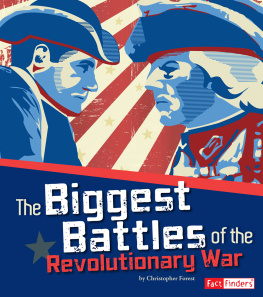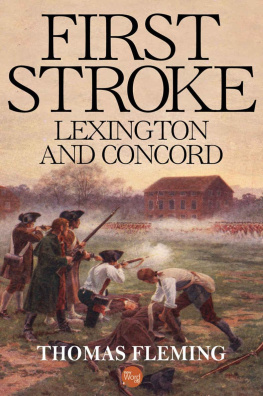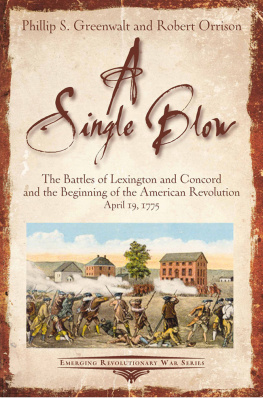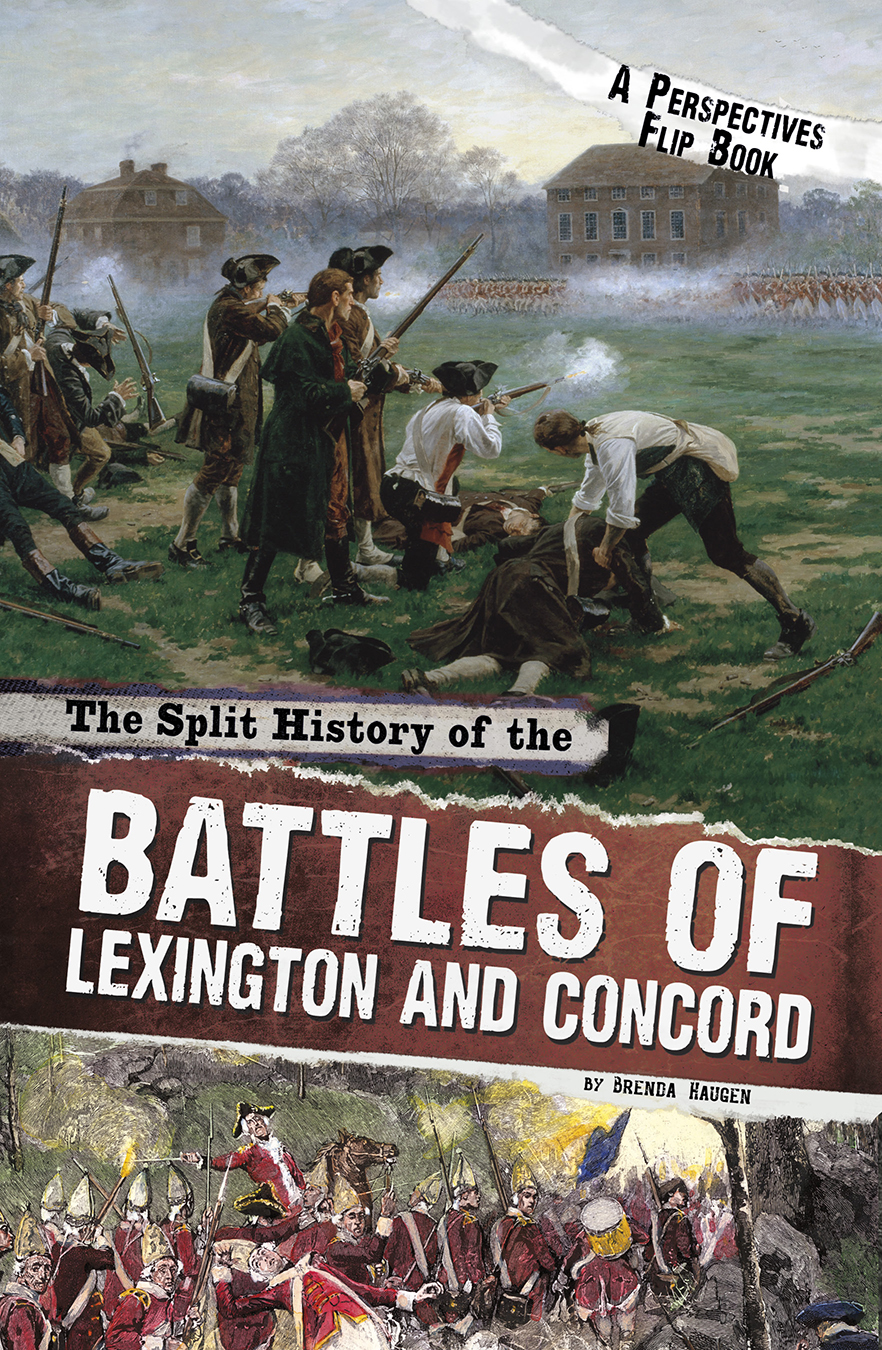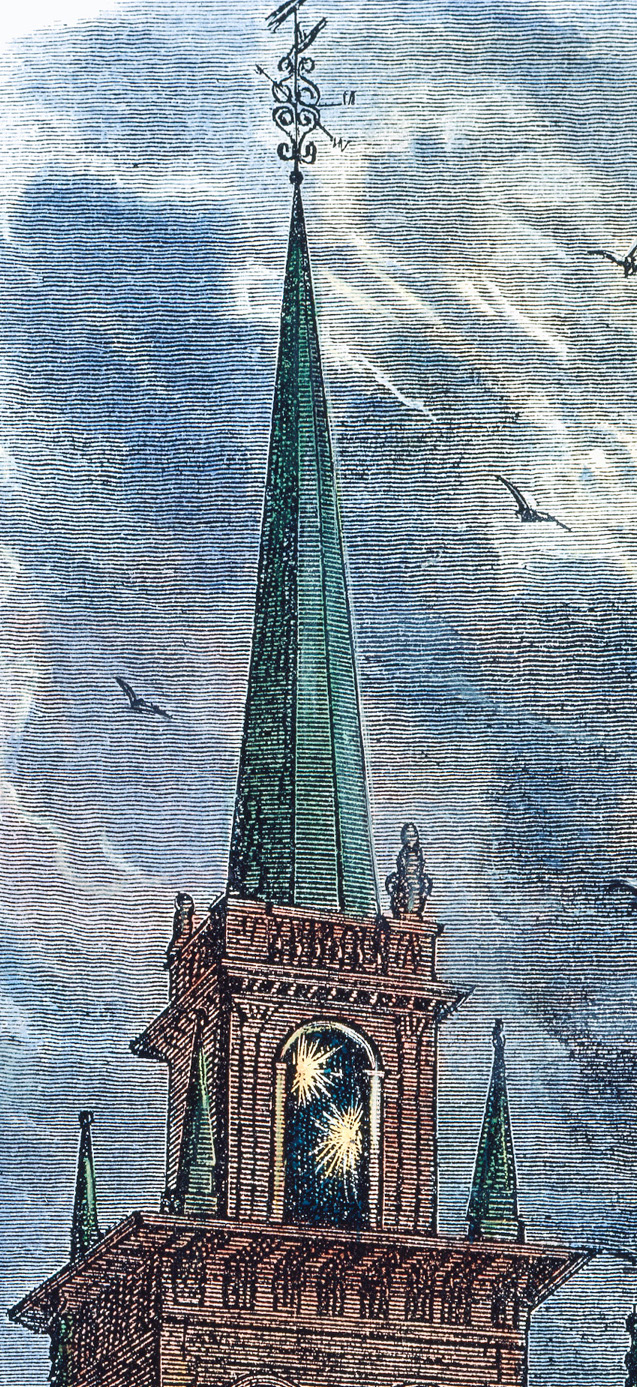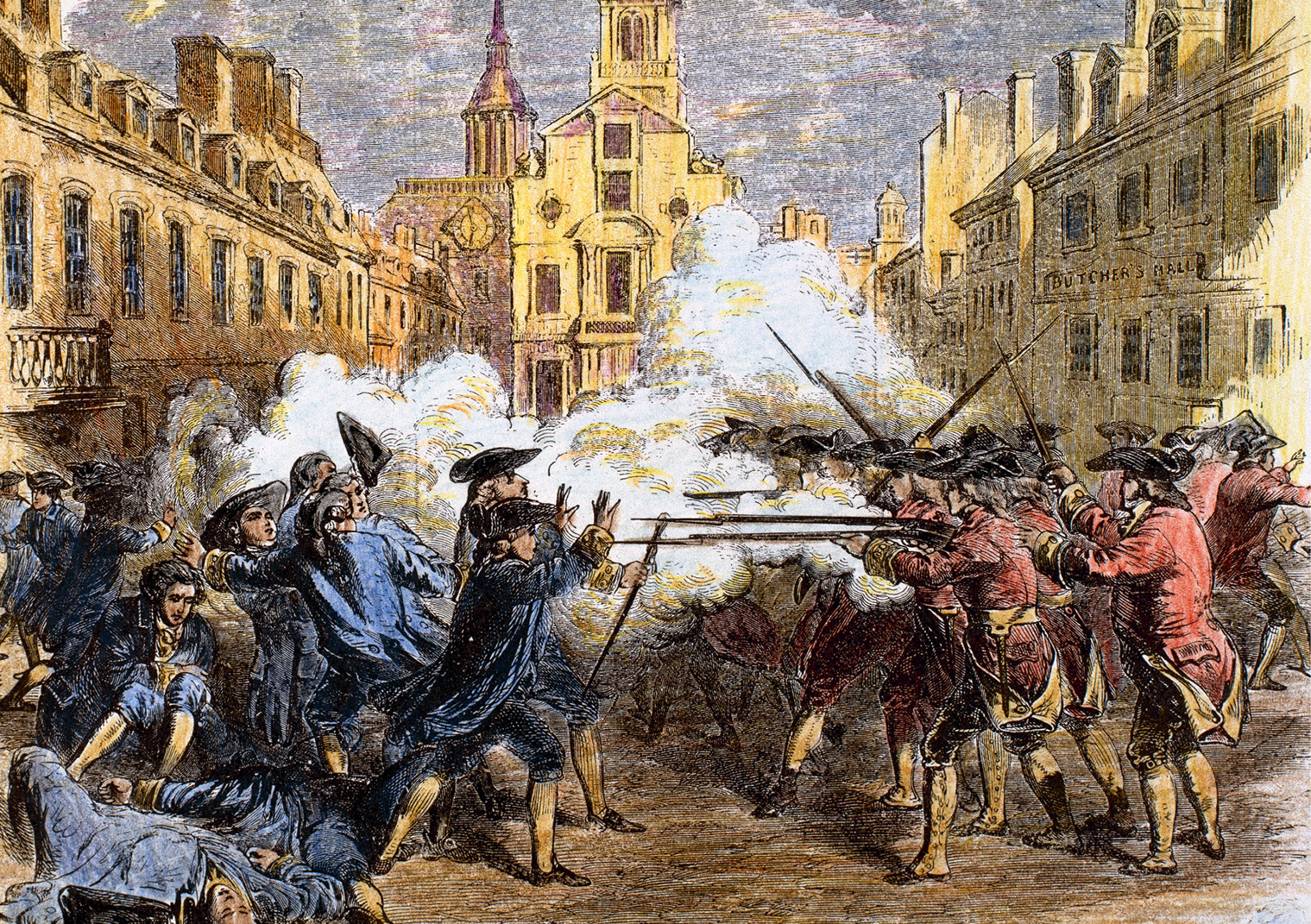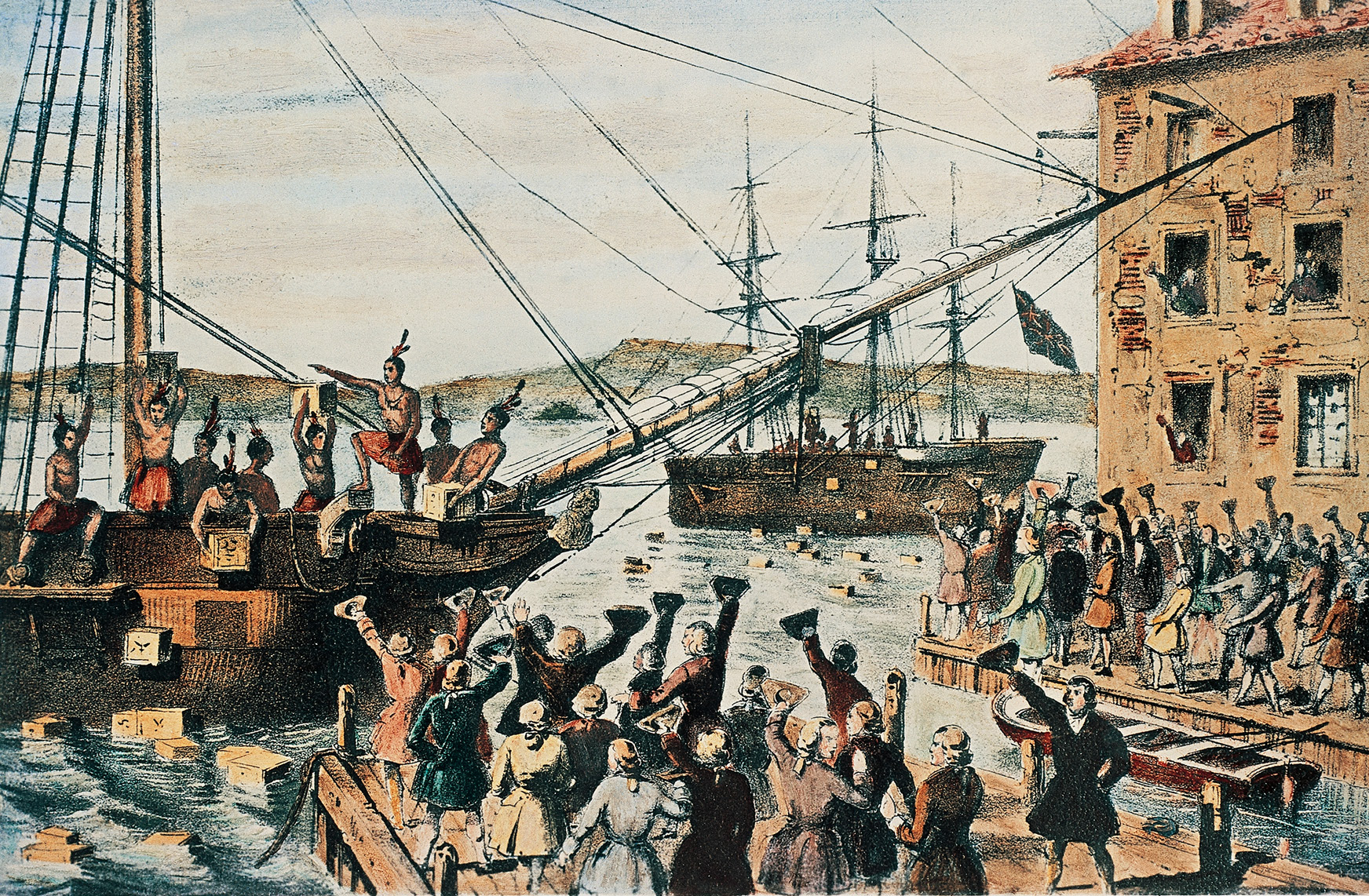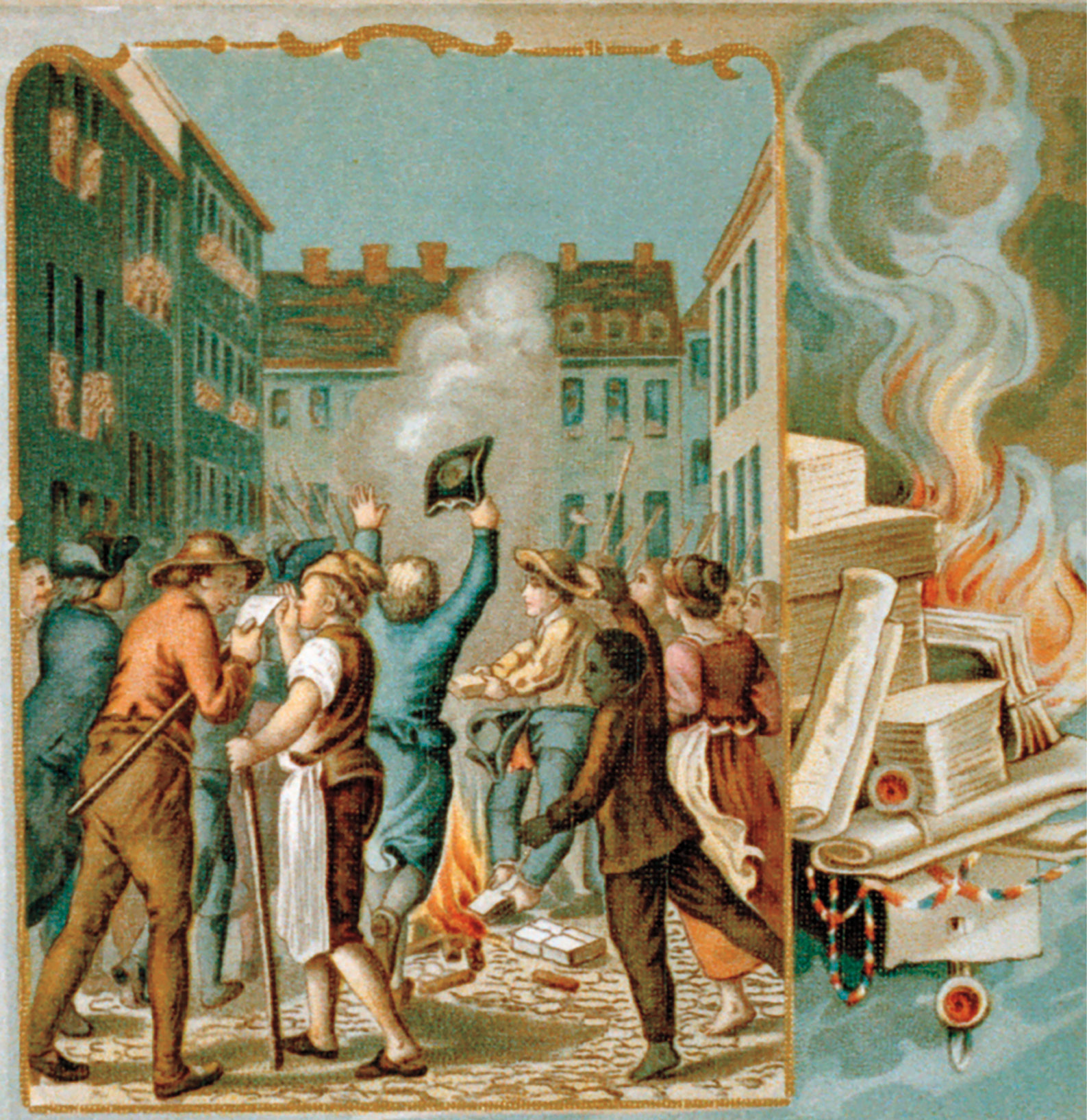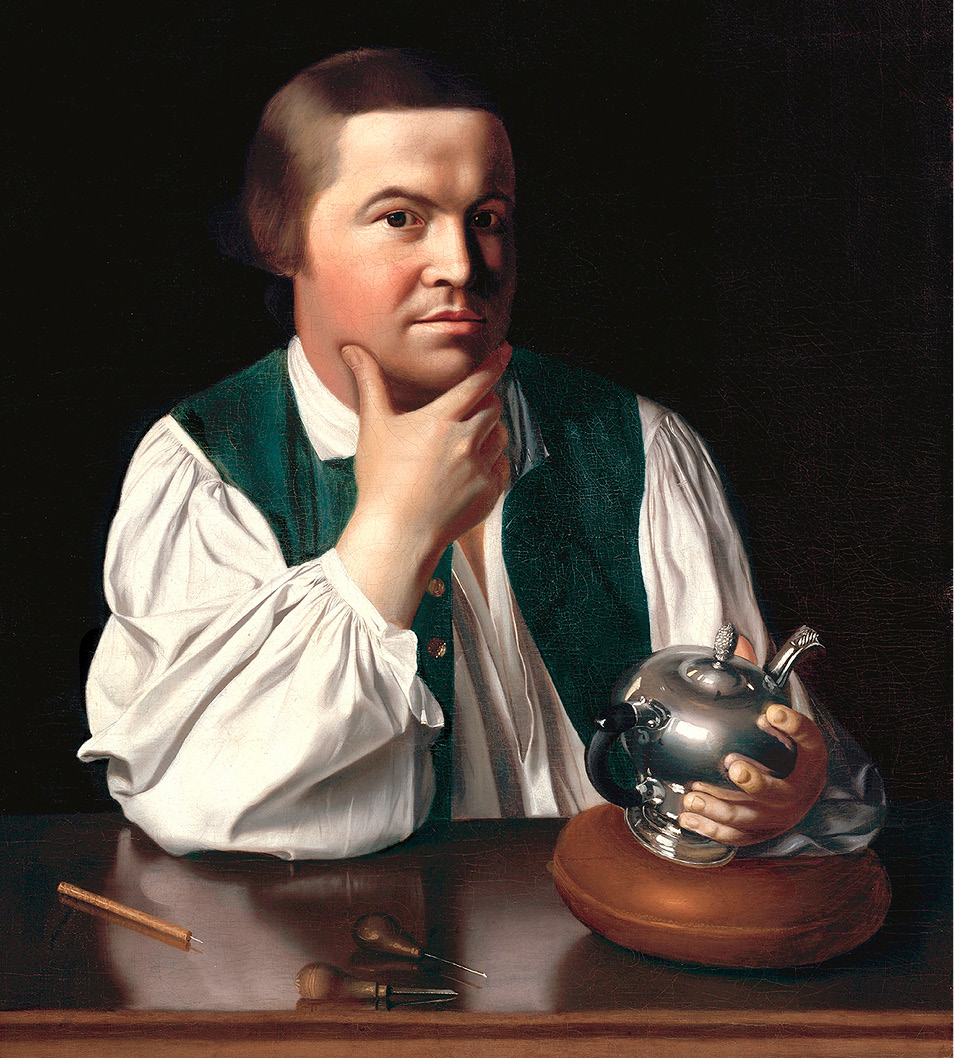CHAPTER 1
SOUNDING THE ALARM
O n the evening of April 18, 1775, colonists in Boston watched as British troops boarded boats just before midnight. They were crossing the Charles River to nearby Cambridge. Near the top of Bostons Old North Church, two lanterns appeared. The lanterns signaled Paul Revere, a member of the Sons of Liberty, to spread the word that the British were on the move. Quickly, Revere rode through the countryside and alerted others. As he spread the news, other men he encountered jumped on horses and helped get the message to as many colonists as possible.
The patriots expected that the British were going to raid colonial stores of weapons and supplies several miles up the road in Concord. They also believed colonial leaders Samuel Adams and John Hancock might be arrested. Revere knew he had to warn Adams and Hancock, who were staying in Lexington, as well as the folks in Concord. But with British patrols guarding the routes out of Boston and the road to Concord, Revere knew he wasnt guaranteed to reach either of his destinations.
Two lanterns in the Old North Church signaled Paul Revere that the British were moving out by sea.
THE SONS OF LIBERTY
The Sons of Liberty was a secret society of American patriots who rallied against British rule whenever they could. They organized resistance efforts against taxes they felt were unfair.
The first Sons of Liberty groups formed in Boston and New York around 1765 to protest the taxes levied through the .
GROWING UNREST
In the years leading up to the Revolutionary War, Boston had become the center of growing unrest. Colonists there were fed up with the unfair taxes levied by the British. They boycotted goods that were taxed and had harsh words for the British troops who were sent to enforce the new taxes.
On March 5, 1770, those harsh words turned violent. On that cold New England night, a group of angry colonists insulted a British guard and began throwing snowballs at him. Other British soldiers joined the scuffle and began firing their weapons into the crowd. Five Americans were killed. The event became known as the Boston Massacre.
Tensions boiled over with the Boston Massacre in March 1770. Two of the five victims were only 17 years old.
The Boston Massacre only served to raise the level of anger many in Boston felt, and it gave them even more reason to protest. After night fell on December 16, 1773, members of the Sons of Liberty moved quietly to Boston Harbor. Dressed as Native Americans, the men boarded three ships docked in the harbor and dumped 342 chests of tea from the British East India Company into the water to protest the tea tax levied by Parliament.
In three hours on the night of December 16, 1773, 116 protesters destroyed 92,000 pounds (41,730 kilograms) of tea.
Britains response to the Boston Tea Party was the Coercive Acts, which singled out Massachusettsand Boston in particularfor punishment. Colonists called them the Intolerable Acts. Again, this move by the British led the patriots to unite. They formed the First Continental Congress in 1774, which was called to discuss a plan of resistance that all the colonies could agree upon.
Men, women, and children gathered to burn the stamps required for certain products.
Armed resistance wasnt out of the question. Since the 1760s the colonies had been forming , which were ready to fight when called upon.
CONTROLLING ACTS
The French and Indian War (17541763) left Great Britain with a lot of debt. To help pay that debt, Parliament taxed the American colonies. When the colonists objected to the taxes, the British became determined to assert their right to tax the colonies. They responded by passing other acts to exert control.
Sugar Act
Passed in 1764, the Sugar Act placed taxes on sugar and molasses imported to the colonies from places such as the French and Dutch West Indies instead of the British West Indies.
Stamp Act
Passed in 1765, this act taxed all commercial and legal papers, newspapers, playing cards, pamphlets, almanacs, and dice sold in the colonies.
Townshend Acts
Passed in 1767, these acts taxed all imported glass, lead, paper, tea, and paint.
Coercive Acts
Passed in 1774 partly as a response to the Boston Tea Party, the Coercive Acts were designed to restore order and punish the rebels in Boston. Known as the Intolerable Acts in the colonies, they included several acts that made colonists angry:
- The Boston Port Act closed Bostons port until the loss of revenue from the Boston Tea Party was paid back.
- he Massachusetts Government Act halted democratic town meetings in the colony.
- The Administration of Justice Act said British officials could not be punished for crimes in Massachusetts.
- The Quartering Act required colonists to share their homes with British troops when asked.
CHAPTER 2
GETTING ORGANIZED
C olonial militias were nothing new in the 1770s. In Massachusetts, militias had been around since the 1600s. The first militias formed to protect townspeople from attacks from Native Americans and foreign invaders. These militias were well trained, and by the 1770s, many of the men had fought in battles.
The force chosen from these militias to respond very quickly. They were expected to be the first militiamen to arrive on the battlefield.
About one of every three or four militiamen was chosen as a minuteman. They were usually under age 25 and were picked for the job because of their strength and reliability. They needed to be well-armed and ready for battle in mere minutes. The minutemens ability to be ready in an instant was aided by a series of alarm signals, such as town bells and messengers on horseback. Every community was required to participate in the alarm system.
Silversmith Paul Revere is best known for his ride to warn colonists, but he also took part in the Boston Tea Party.
Paul Revere was part of that alarm system, and he kept a close eye on the movements of the British troops. Not surprisingly, Revere was well known to British officials.
In January 1775 General Thomas Gage, the British-born governor of Massachusetts, received word from his superiors in England. The previous year Englands King George III had put Gage in charge of Massachusetts to enforce the Intolerable Acts. Gage was expected to put an end to the rebellion there by arresting patriot leaders and disarming the people of the colony.


